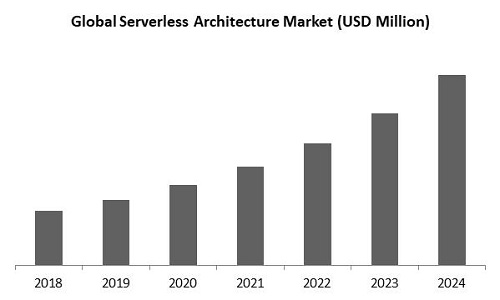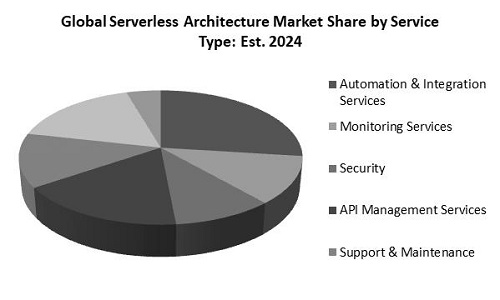
The Global Serverless Architecture Market size is expected to reach $14 billion by 2024, rising at a market growth of 23.4% CAGR during the forecast period. Serverless architecture is a software design pattern in which applications are provided by a third-party service, thereby, eradicating the necessity for hardware management and server software by the developer. Applications are deployed into individual functions which can be further invoked and expanded on individual basis. In order to host a software application on the internet, it is essential to manage some kind of server infrastructure.
Global Serverless Architecture Market Size

The awareness of benefits associated with serverless architecture has increased over time. Some of the benefits driving the growth of this market include reduced operational cost and increased process agility. Further, from the perspective of a developer, benefits like easier operational management, faster set up, and zero system administration are advancing their implementations. Based on Deployment Type, the market is segmented into Public Cloud, Private Cloud and Hybrid Cloud. Based on service Type, the market is segmented into Automation & Integration Services, Monitoring Services, Security, API Management Services, Support & Maintenance, Training & Consulting and Others. Based on Organization Size, the market is segmented into Large Enterprises and Small & Medium Enterprises.
Based on End User, the market is segmented into BFSI, Manufacturing, Healthcare, Retail, Government, Media & Entertainment, Telecom & IT and Other End User. Based on Regions, the market is segmented into North America, Europe, Asia Pacific, and Latin America, Middle East & Africa. The market research report covers the analysis of key stake holders of the market.
Global Serverless Architecture Market Share

Key companies profiled in the report include IBM Corporation, Microsoft Corporation, Google Inc., CISCO Systems, Inc., Oracle Corporation, CA Technologies, Inc., Amazon.com, Inc. (Amazon Web Services), TIBCO Software Inc., NTT DATA Corporation, ALIBABA Group.
Related Reports:
Our team of dedicated experts can provide you with attractive expansion opportunities for your business.
